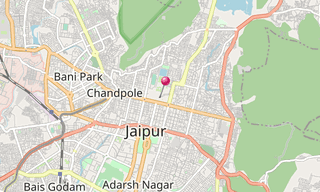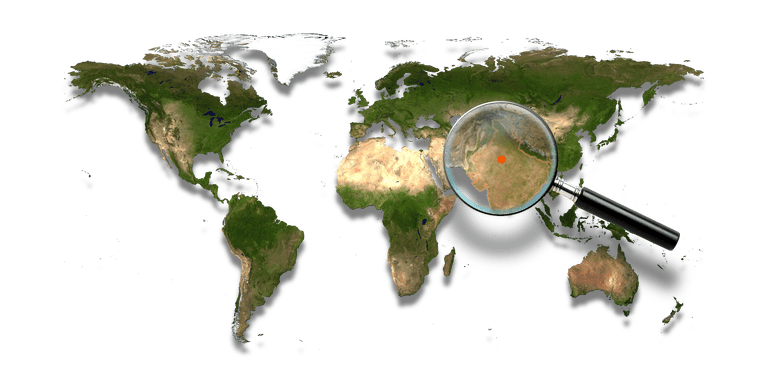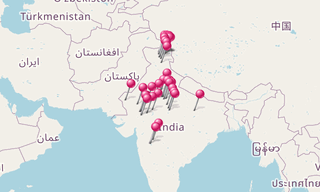Jaipur, also popularly known as the Pink City, is the capital and largest city of the Indian state of Rajasthan. During the British rule in India, Jaipur was the capital of the princely state of Jaipur. It was founded on 18 November 1727 by Maharaja Sawai Jai Singh II, the ruler of Amber.
Jaipur is the first planned city of India, located in the semi-desert lands of Rajasthan. The Palace quarter encloses a sprawling palace complex, Hawa Mahal, formal gardens, and a small lake. Nahargarh Fort, which was the residence of the King Sawai Jai Singh II, crowns the hill in the north-west corner of the old city.
The observatory, Jantar Mantar, is one of the UNESCO World Heritage Site.
Main sights
- Hawa Mahal: The Hawa Mahal (“The Palace of Winds” or “The Palace of Breeze”) is a palace in Jaipur, built from red and pink sandstone, the palace sits on the edge of the City Palace, and extends to the Zenana, or women's chambers.
- Amber Fort: The Amer Fort (or Amber Fort) is a fort located in Amer. The town of Amer and the Amber Fort were originally built by Raja Man Singh and additions were, later, made by Sawai Jai Singh.
- Jaigarh Fort
- Nahargarh Fort
- City Palace: The City Palace was established at the same time as the city of Jaipur, by Maharaja Sawai Jai Singh II, who moved his court to Jaipur from Amber, in 1727.
- Jantar Manta
- Jal Mahal
- Rambagh Palace
- Galtaji: The Galtaji is an ancient Hindu pilgrimage. The site consists of a series of temples built into a narrow crevice in the ring of hills that surrounds Jaipur. A natural spring emerges high on the hill and flows downward, filling a series of sacred kunds (water tanks) in which pilgrims bathe.
- Gaitor: The Royal Gaitor is a series of memorial cenotaphs to the Rajput rulers. Maharaja Jai Singh II Chhatri’s tomb and the huge tomb of Sawai Jai Singhji Chhatri are both located here.

-Hawa-Mahal-(Palace-of-Winds).hero.landscape.jpg?w=1600)


.jpg?w=256)
.jpg?w=256)
-Market.jpg?w=256)
-City-Palace.jpg?w=256)
.jpg?w=256)
.jpg?w=256)
.jpg?w=256)
.jpg?w=256)
.jpg?w=256)
-Market.jpg?w=256)
-Wedding.jpg?w=256)
.jpg?w=256)
.jpg?w=256)
.jpg?w=256)
.jpg?w=256)
.jpg?w=256)
-City-Palace-(Peacock-Gate).jpg?w=256)
.jpg?w=256)
.jpg?w=256)
-City-Palace.jpg?w=256)
-Market.jpg?w=256)
-Market.jpg?w=256)
.jpg?w=256)
-Market.jpg?w=256)
-Market.jpg?w=256)
-Market.jpg?w=256)
-City-Palace.jpg?w=256)
.jpg?w=256)
.jpg?w=256)
.jpg?w=256)
.jpg?w=256)
.jpg?w=256)
.jpg?w=256)
.jpg?w=256)
-Market.jpg?w=256)
.jpg?w=256)
-Market.jpg?w=256)
.jpg?w=256)
-City-Palace.jpg?w=256)
.jpg?w=256)
-Market.jpg?w=256)
.jpg?w=256)
.jpg?w=256)
.jpg?w=256)
.jpg?w=256)
-Hawa-Mahal-(Palace-of-Winds).jpg?w=256)
.jpg?w=256)
-City-Palace.jpg?w=256)
-Market.jpg?w=256)
-City-Palace-(Peacock-Gate).jpg?w=256)
.jpg?w=256)
-City-Palace.jpg?w=256)
.jpg?w=256)
-Market.jpg?w=256)
-Market.jpg?w=256)
-Market.jpg?w=256)
.jpg?w=256)
-Hawa-Mahal-(Palace-of-Winds).jpg?w=256)
.jpg?w=256)
.jpg?w=256)
.hero.jpg?w=320)

.hero.jpg?w=320)
.map.png)